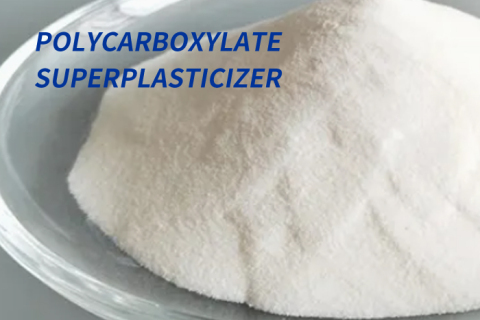
- Home
- >
News
As a significant breakthrough in concrete technology, polycarboxylate superplasticizer (PCE) is redefining standards for modern construction. This high-performance chemical additive brings revolutionary performance enhancements to concrete engineering through its unique molecular structure design.
Due to the low softening point, ordinary polycarboxylate superplasticizers cannot be powdered by spray drying. Molecular design to increase softening point without losing water-reducing performance yields high-content powdered polymers.
TPEG (Polyether High-Efficiency Water Reducing Agent Monomer) is a new type of water-reducing agent widely used in the construction industry, particularly in the production and application of concrete. TPEG enhances its water-reducing performance and fluidity through chemical modification, making it an essential component of modern concrete technology.
Polycarboxylic acid series high-performance water reducing agent is a new generation of high-performance water reducing agent appearing at home and abroad in recent years. Compared with naphthalene series and other traditional superplasticizers, polycarboxylic acid series high-performance superplasticizers have many unique technical performance advantages:
With the development of the modern construction industry, concrete technology continues to advance. Among them, HPEG as a new type of high-efficiency water-reducing agent, has attracted widespread attention due to its unique performance and environmental protection characteristics. This article will explore the use of polycarboxylate superplasticizer monomers in the construction industry and the benefits they bring.
HPEG adopts highly active catalyst and special synthesis process, with light appearance, accurate molecular weight, white appearance, narrow molecular weight distribution, low glycol content and high double bond retention.
High-efficiency water reducer product overview High-efficiency water reducer is an important concrete additive, which can effectively reduce the water-cement ratio of concrete, thereby improving the strength and durability of concrete. Compared with traditional water reducers, high-efficiency water reducers have the following advantages:
Polycarboxylate water-reducing agents has the properties of high water reduction and high slump retention, and can impart high strength and durability to concrete. It has shown outstanding advantages in high-quality projects such as national large-scale water conservancy, nuclear power, and bridges. Compared with naphthalene-based water-reducing agents, polycarboxylate water-reducing agents are sensitive to the mud content of sand and gravel aggregates [1-3] and are expensive. Therefore, in laboratories and engineering construction, attempts have been made to mix polycarboxylate water-reducing agents and naphthalene-based water-reducing agents to take advantage of their respective advantages.
Water reducer is usually called concrete water reducer, which is an additive in concrete. Water reducers are added in concrete construction, do you know why water reducers are added to concrete? What happens if you don't add it? What are the consequences? Let's find out together.
How much can the water reduction rate of polycarboxylic acid high-performance water reducer reach? First of all, we should know that the water reduction rate of polycarboxylic acid water reducer refers to the percentage of water consumption that can be reduced under the specified dosage, that is, the water reduction rate. For example, it was originally necessary to use 100g of water to make the mortar mix.
Due to its excellent properties, polycarboxylate superplasticizers are widely used in many fields, including:












